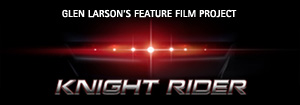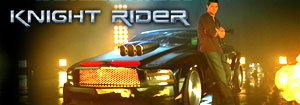this is the thread for spotting lazy film making in KR,like using models in scenes that they couldnt be bothered or couldnt afford to shoot.
ok i'll start,i was watching the ''BIG IRON'' epi today and when kitt and michael got buried in the soil they didnt use kitt,they used a normal 82 trans am with a regular trans am nose and no scanner.
film making lazyness
Moderators: neps, Matthew, Michael Pajaro
Yeah I noticed that too. Its kinda of the same principle with shows like the Fal Guy, when COLTS GMC truck was jumped or damaged they never used the same model year for his truck, they always used like an older model truck. The same goes for the A-Team van. But I could never get the concept of those ugly miniatures that they used.
-
CB2001
- FLAG Assistant
- Posts: 567
- Joined: Mon Jul 01, 2002 1:01 am
- What year did the original Knight Rider start: 0
- Location: Florida
- Contact:
Here is a post I made about model miniatures and why one was used for Goliath coming out of the garage, which does apply to filmmaking all together:
When it comes to productions of any kind (movie, TV, TV-movie, etc), there are two overall factors: budget and time. Studios are always pressing production companies because of time and budget.
For time wise, maybe the production crew didn't have enough time to go back and reshoot scenes that could have been done with the real truck, because when it comes to shows, they often shoot three episodes at the same time (and this restricts the amount of time for second unit to do coverage). Another thing is that if they did have time, it would take a lot of money to take the truck out on location, set up the equiptment and shoot the truck coming out of the garage. Film is also expensive too.
However, there have been a couple of movies released that I know that had dealt quite well with these two problems. The first is "Duel", Spielberg's first movie. He wanted to shoot the film out on location, but the studio said that, "a film of this size cannot be shot out on location with the timeframe we have" (basically, they gave him 11 days to work on it) and that he should go out, shoot plates and then use rear-screen projection. Spielberg was against the rear screen projection because it looked fake. He wanted it to look real. The studio then said, "Okay, look. If you go out and shoot plates for the first two days, if you are under budget and on schedule, then you can film the whole movie on location." He did, and he was on time and on schedule, the studio allowed him to shoot the film on location. However, towards the end, he went over schedule by two days. But he created one of the best TV-movies ever made.
Another was the movie "Underworld". The studio told the director that they didn't have enough time for him to shoot a "memory glitch" scene that was set in the far past, but that if the director was on schedule, they'd be willing to give him the time. He was, and now we have the "memory glitch" scene of Lucian watching his beloved Sonja die.
Time and money. That's what it's all about. Studios are saying "make it faster! Cheaper!". When they get the final product, they ask, "Why does it look like crap?"
When it comes to productions of any kind (movie, TV, TV-movie, etc), there are two overall factors: budget and time. Studios are always pressing production companies because of time and budget.
For time wise, maybe the production crew didn't have enough time to go back and reshoot scenes that could have been done with the real truck, because when it comes to shows, they often shoot three episodes at the same time (and this restricts the amount of time for second unit to do coverage). Another thing is that if they did have time, it would take a lot of money to take the truck out on location, set up the equiptment and shoot the truck coming out of the garage. Film is also expensive too.
However, there have been a couple of movies released that I know that had dealt quite well with these two problems. The first is "Duel", Spielberg's first movie. He wanted to shoot the film out on location, but the studio said that, "a film of this size cannot be shot out on location with the timeframe we have" (basically, they gave him 11 days to work on it) and that he should go out, shoot plates and then use rear-screen projection. Spielberg was against the rear screen projection because it looked fake. He wanted it to look real. The studio then said, "Okay, look. If you go out and shoot plates for the first two days, if you are under budget and on schedule, then you can film the whole movie on location." He did, and he was on time and on schedule, the studio allowed him to shoot the film on location. However, towards the end, he went over schedule by two days. But he created one of the best TV-movies ever made.
Another was the movie "Underworld". The studio told the director that they didn't have enough time for him to shoot a "memory glitch" scene that was set in the far past, but that if the director was on schedule, they'd be willing to give him the time. He was, and now we have the "memory glitch" scene of Lucian watching his beloved Sonja die.
Time and money. That's what it's all about. Studios are saying "make it faster! Cheaper!". When they get the final product, they ask, "Why does it look like crap?"



